National Chemistry Week Celebrates Chemistry and Health
Oct. 25, 2011
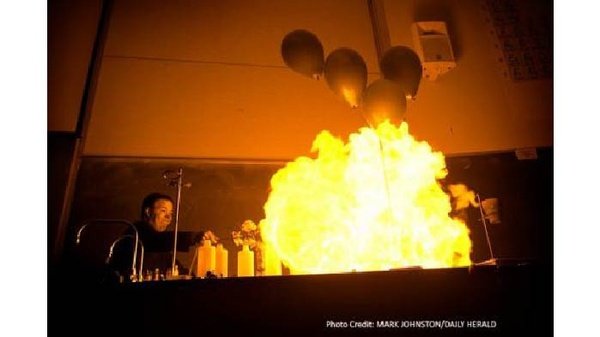
Explosions always abound during National Chemistry Week in the popular magic shows sponsored by the Department of Chemistry and Biochemistry. However, beyond the purple flashes and color-changing liquids chemistry is more than entertaining – it’s life-sustaining.
This year’s theme for Chemistry Week was “Our Health, Our Future,” an idea that was explored in depth throughout the week’s activities. In a magic show on Wednesday, Dr. Matthew C. Asplund used a flashy demonstration with a Swedish Fish to teach elementary school students about energy.

Dr. Asplund's assistant supervises the Swedish Fish demonstration.
“So that is all of the energy in one gummy fish released in about 30 seconds,” Dr. Asplund said over the enthusiastic oohs andaahs. “This is why, in a couple of weeks when it’s Halloween, you need to not come home and eat all of your candy at once. We don’t want you doing that. If you burst into flames, it’s certain to make a mess,” he joked.

Dr. Asplund teaches chemistry principles to a full house of excited elementary school students.
Dr. James Patterson and others also organized the second annual Chemistry Symposium, which took place on Thursday, October 20. There were four chemistry and health-related topics, including chemistry and cancer therapy, chemistry of food, chemistry and cleaners and chemistry and cosmetics.
“Typically when you think of cosmetics, you think of women’s makeup,” said Rachel Sabin of Tahitian Noni International, who team taught the cosmetics lecture with Ryan Roberts of Neways, Inc. “But really, cosmetics are more than that. It includes toothpaste, shampoo, makeup … The fun thing about cosmetic science is you get to work on products people use in everyday life.”
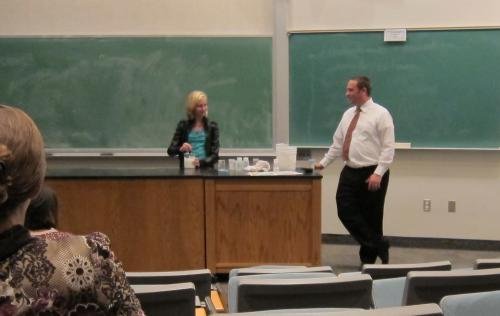
A volunteer from the audience mixes up a quick lotion with instructions from Ryan Roberts and Rachel Sabin.
Steven Bromberg, a chemist from the Clorox® Company, delivered his lecture via Skype from California. He outlined the history of Clorox® bleach and the need for a disinfectant to limit the spread of disease. “Bleach has been developed and evolved through innovation for a long time,” he said, then quoted former president of America Public Health Association Dr. Abel Wolman as saying, “Bleach has saved more lives than any other substance made by man, due to its ability to reduce waterborne disease.” Bromberg cautioned bleach users to be careful handling the strong disinfectant with their bare hands, and to replace their bleach supply annually.
Frost Steele of the BYU Department of Nutrition, Dietetics and Food Science broke down the chemical components of ice cream and explained the need for each one. This popular lecture was capped off by a cup of free liquid nitrogen ice cream, courtesy of Y Chem.
Mark Parnell, a chemist from Astex Pharmaceuticals, shared some details about the development of one of the company's recent discoveries which led to a compound with the potential to target cancer cells without making normal cells sick, unlike an existing cancer treatment called chemotherapy. “We’re very excited about it,” Parnell said. “This is a compound class we’re hoping to put into clinical trials within the next two or three years. We’re filing patents on it right now.”

Mark Parnell explains some of Astex's ongoing research on a new cancer-fighting compound.
The Research Poster Session was set up on Friday afternoon, highlighting some of the research projects currently being conducted in the department. Faculty and graduate students presented their research. Attendees enjoyed a snack table as well as edification.
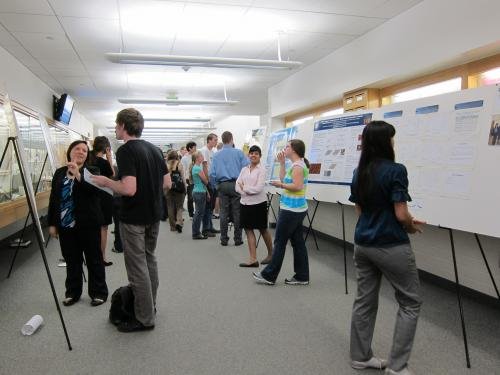
The Research Poster Session took place on Friday afternoon as part of National Chemistry Week.
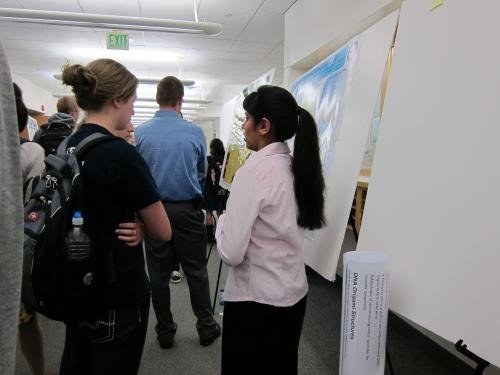
A student discusses her research with a peer at the Research Poster Session on Friday.
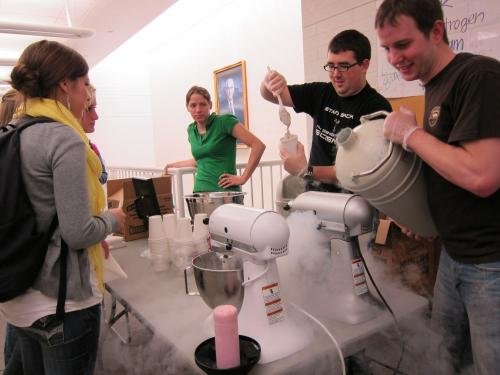
Y Chem Society sold liquid nitrogen ice cream throughout the week to raise money for their activities this year.
By Jessica Henrie
Photos by Mark Johnston, Daily Herald (used with permission)